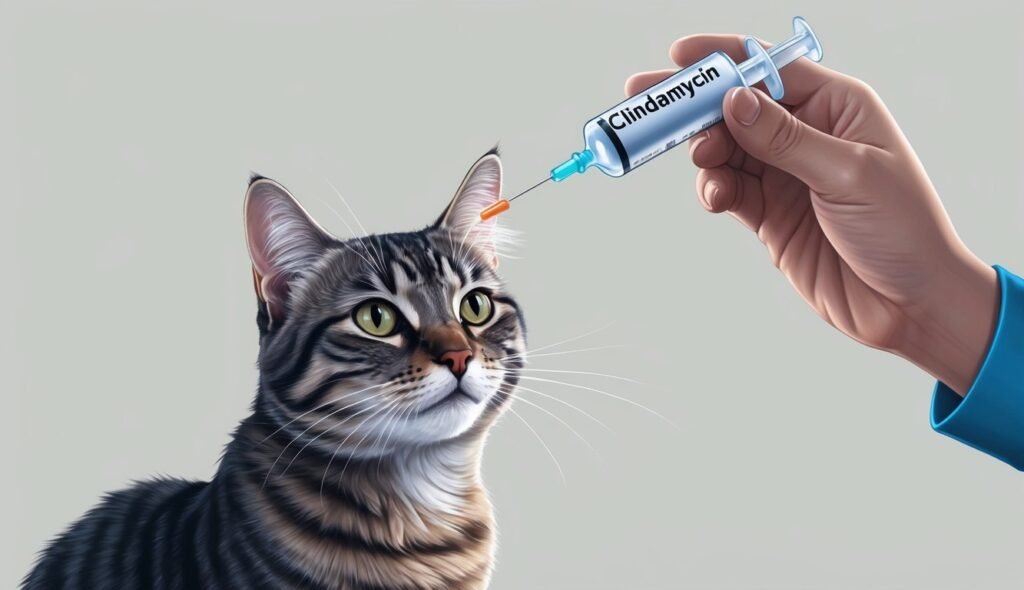Comfortis for cats is a popular choice for pet owners dealing with flea infestations.
This chewable tablet effectively kills adult fleas within 30 minutes and prevents future infestations for a month.
Using Comfortis can simplify your routine while keeping your furry friend comfortable and free from the irritation that fleas can cause.
If you’re considering flea treatment options, you’ll find that Comfortis stands out due to its fast action and convenience.
Cats enjoy the beef-flavored chewable form, making it easy to administer.
Understanding the safety aspects and dosage will help ensure that your kitty receives the best care possible.
Staying informed about the right flea treatment can make a significant difference in your pet’s well-being.
As you continue reading, you’ll discover everything you need to know about using Comfortis effectively and safely for your cat.
Key Takeaways
- Comfortis is an effective chewable tablet for treating fleas in cats.
- It begins to work within 30 minutes and lasts for a month.
- Understanding proper dosage and safety can enhance your cat’s experience with this treatment.
Understanding Comfortis
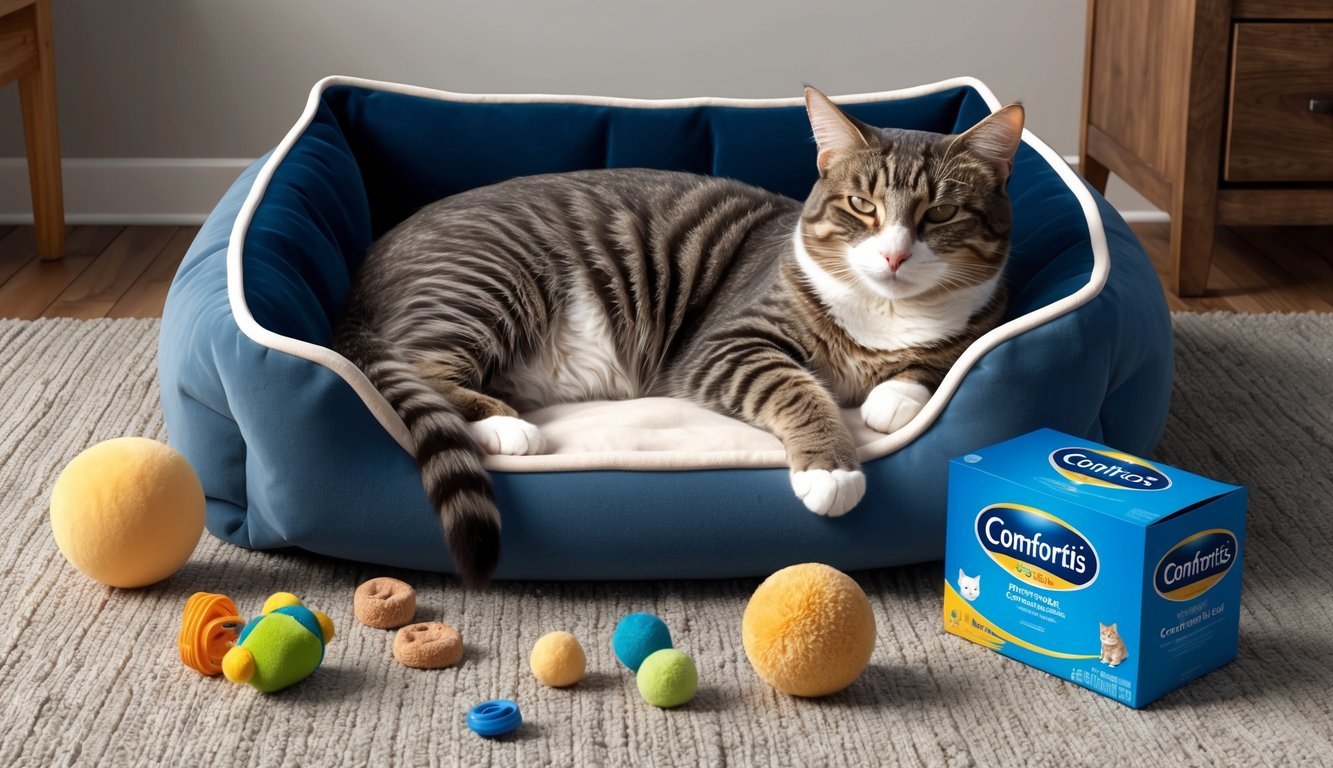
Comfortis is an effective oral flea treatment specifically designed for cats.
Unlike topical solutions, this product is administered in chewable tablet form, which many cats find easier to accept.
Let’s explore what makes Comfortis a choice for managing flea infestations in your feline friend.
What Is Comfortis?
Comfortis is a prescription medication used to treat and prevent flea infestations in cats and kittens aged 14 weeks and older.
This product comes in chewable tablets flavored to appeal to cats, making administration straightforward.
Each tablet provides protection for up to 30 days, killing fleas rapidly.
You typically give Comfortis once a month, either before or after feeding your cat.
This ease of use helps ensure you don’t miss a dose, keeping your pet protected from fleas.
Active Ingredient: Spinosad
The active ingredient in Comfortis is Spinosad, a naturally derived compound that disrupts the nervous system of fleas.
Once ingested, Spinosad starts killing fleas within 30 minutes.
This prompt action is especially beneficial if your cat is already dealing with a flea infestation.
Spinosad’s efficacy extends throughout the month, providing continuous protection by preventing fleas from re-infesting your pet.
Many cats tolerate Spinosad well, but monitoring for possible side effects is always prudent.
Whether by standing alone or as part of a broader flea control strategy, Comfortis delivers a reliable way to keep your cat free from annoying fleas.
Benefits and Effectiveness
Comfortis offers two primary advantages when it comes to flea control for your cat: quick elimination of fleas and lasting protection.
Understanding these benefits helps ensure that your furry friend remains comfortable and flea-free.
Killing Fleas Fast
When your cat is in distress from fleas, you want relief without delay.
Comfortis contains spinosad, which acts swiftly to target the nervous system of adult fleas.
- Speed: The medication starts working within just 30 minutes of administration.
- Effectiveness: It has been noted for its high success rate in killing fleas, often eliminating them quickly and efficiently.
This fast action means that you’ll notice a significant reduction in flea activity, helping to restore your cat’s comfort in no time.
Long-Term Flea Control
Comfortis is not just about immediate relief; it also provides long-lasting protection.
With a single dose, you can keep fleas at bay for up to 30 days.
- Convenience: One tablet means you won’t have to worry about frequent applications.
- Prevention: By eliminating adult fleas, it helps interrupt the flea lifecycle, reducing the chances of reinfestation.
Many pet owners appreciate the beef-flavored tablet, making it easier to administer.
This ensures that your cat gets the protection it needs without added stress.
Usage Guidelines
Understanding how to properly use Comfortis for your cat is crucial for effective flea treatment.
This section covers the recommended dosage and tips for administering the medication to ensure your cat receives it safely and effectively.
Dosage and Administration
Comfortis is typically prescribed for cats and kittens aged 14 weeks and older, weighing at least 4.1 pounds.
The recommended dosage is 50 milligrams per kilogram of body weight.
This means if your cat weighs 5 kilograms, the appropriate dose would be 250 mg.
You should give Comfortis once a month, ideally just before or right after a meal, to enhance absorption and effectiveness.
It’s critical to follow your veterinarian’s prescription and guidelines.
If you’re unsure about your cat’s weight or dosage, consult your vet for clarification.
Avoid using Comfortis in breeding, pregnant, or lactating cats unless directed by a veterinarian.
Oral Administration
Comfortis comes in a tasty, beef-flavored chewable tablet, making it easier to get your cat to take the medication.
When administering Comfortis, you can try the following steps:
- Prepare Food: Place some canned food in a bowl.
- Tablet Preparation: If the tablet seems too large for your cat, consider breaking it into two or more smaller pieces.
- Feeding: Mix the pieces with food to help mask the taste.
Monitor your cat to ensure they chew and swallow the tablet completely.
If your cat refuses it, consult your veterinarian for alternative methods or formulations for flea treatment.
Safety and Side Effects
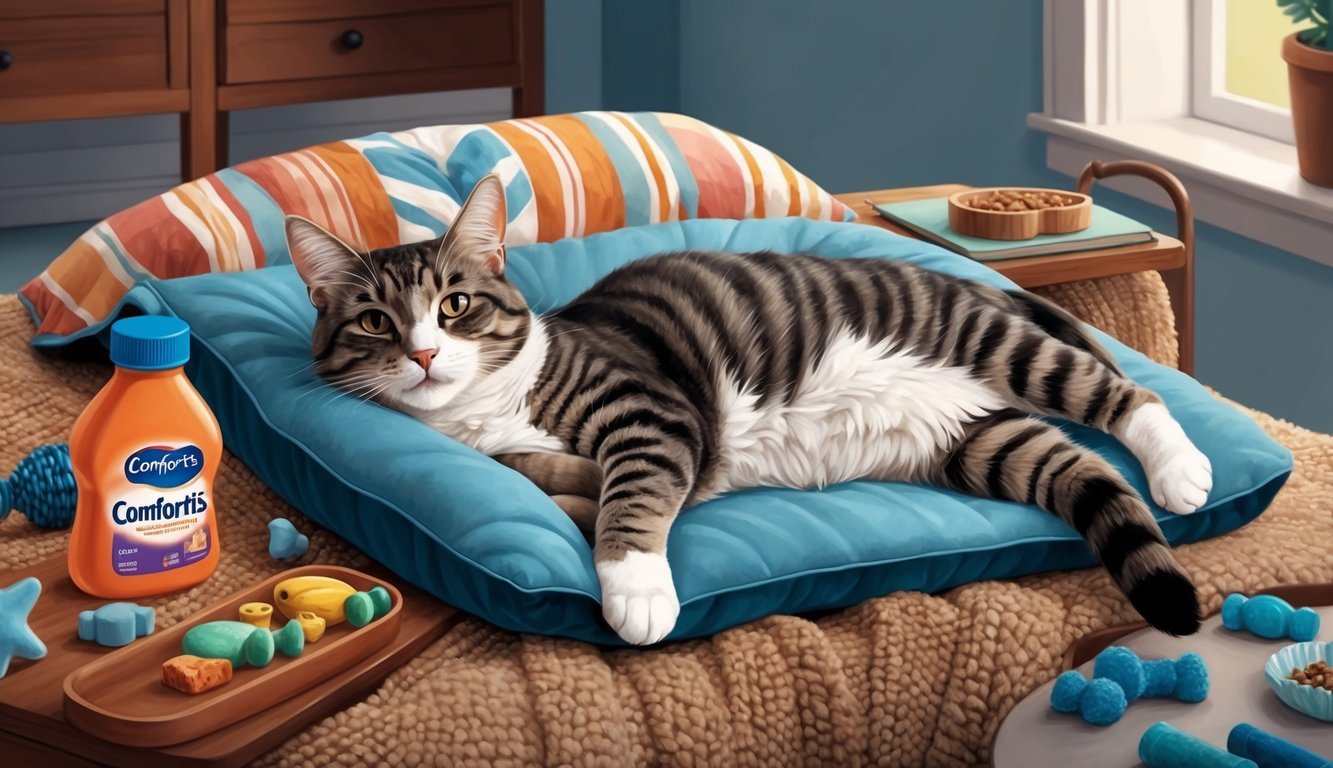
When considering Comfortis for your cat, it’s essential to be aware of potential side effects and safety information.
Being informed can help you monitor your pet effectively after treatment.
Known Side Effects
Comfortis may lead to various side effects, though many cats do not experience any issues.
Some common side effects include:
- Vomiting: This can happen shortly after administration.
- Diarrhea: An upset stomach may result in loose stools.
- Lethargy: Your cat might appear more tired or less active.
- Weight Loss: Some cats may lose weight if they experience decreased appetite.
Most side effects are mild and resolve quickly.
However, if you notice severe symptoms or if your cat appears to be in distress, consult your veterinarian promptly.
Understanding Safety Information
Safety is a priority when it comes to using Comfortis.
It’s crucial to administer the correct dosage, which is typically 50 mg per kg of body weight, once a month.
Giving the medication with food can help reduce stomach upset.
Take caution if your cat is receiving other medications, especially ivermectin, as there may be interactions.
Always ensure your cat is 14 weeks or older and weighs at least 4.1 pounds before using Comfortis.
Regular check-ups with your vet can help ensure your cat stays safe and healthy while on this flea treatment.
Candidacy for Treatment
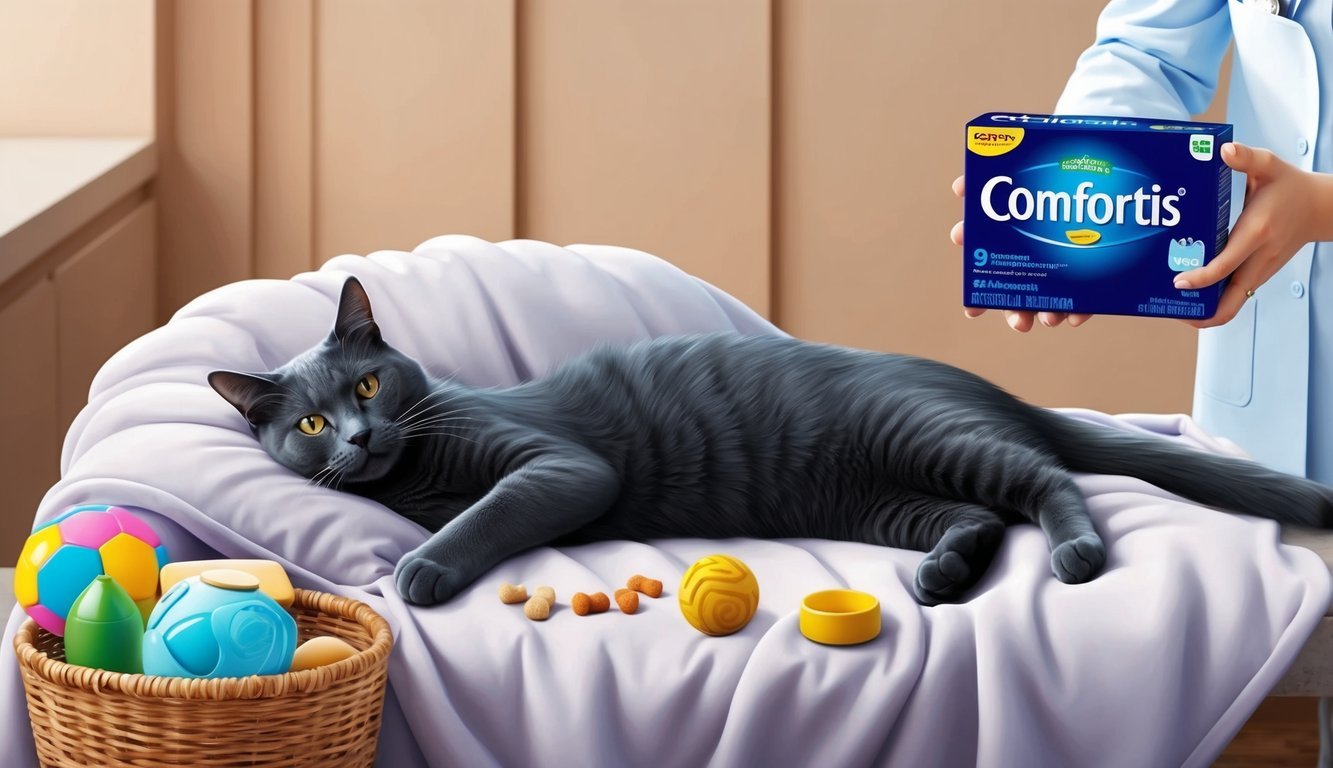
When considering Comfortis for your cat, it’s important to identify which pets are best suited for this treatment and the precautions you should take.
Let’s explore who can benefit and what to keep in mind.
Suitable Candidates for Comfortis
Comfortis is designed for cats and kittens that are at least 14 weeks old and weigh over 4.1 pounds.
It effectively targets flea infestations, making it a good option for those struggling with these pests.
If your cat has a history of flea issues or experiences discomfort due to itching, Comfortis can provide relief.
It’s available in chewable tablets that are usually well-accepted by cats.
If your feline is healthy and has no severe allergies to the active ingredient, spinosad, Comfortis could be a suitable choice.
However, a veterinary consultation is crucial before starting any new medication, especially if your cat has pre-existing health conditions.
Precautions for Use in Cats
While Comfortis is safe for many cats, certain precautions must be observed.
Consult your veterinarian if your cat is taking other medications.
The combination with extra-label uses of ivermectin can pose risks.
Kittens under 14 weeks or under 4.1 pounds should not use Comfortis.
If your cat has a history of seizures or other neurological issues, discuss these concerns with your vet.
Also, monitor your cat after administration, watching for any adverse reactions like vomiting or lethargy.
It’s important to provide your veterinarian with a complete health background for your cat to ensure the safest and most effective treatment plan.
Comparing with Other Treatments
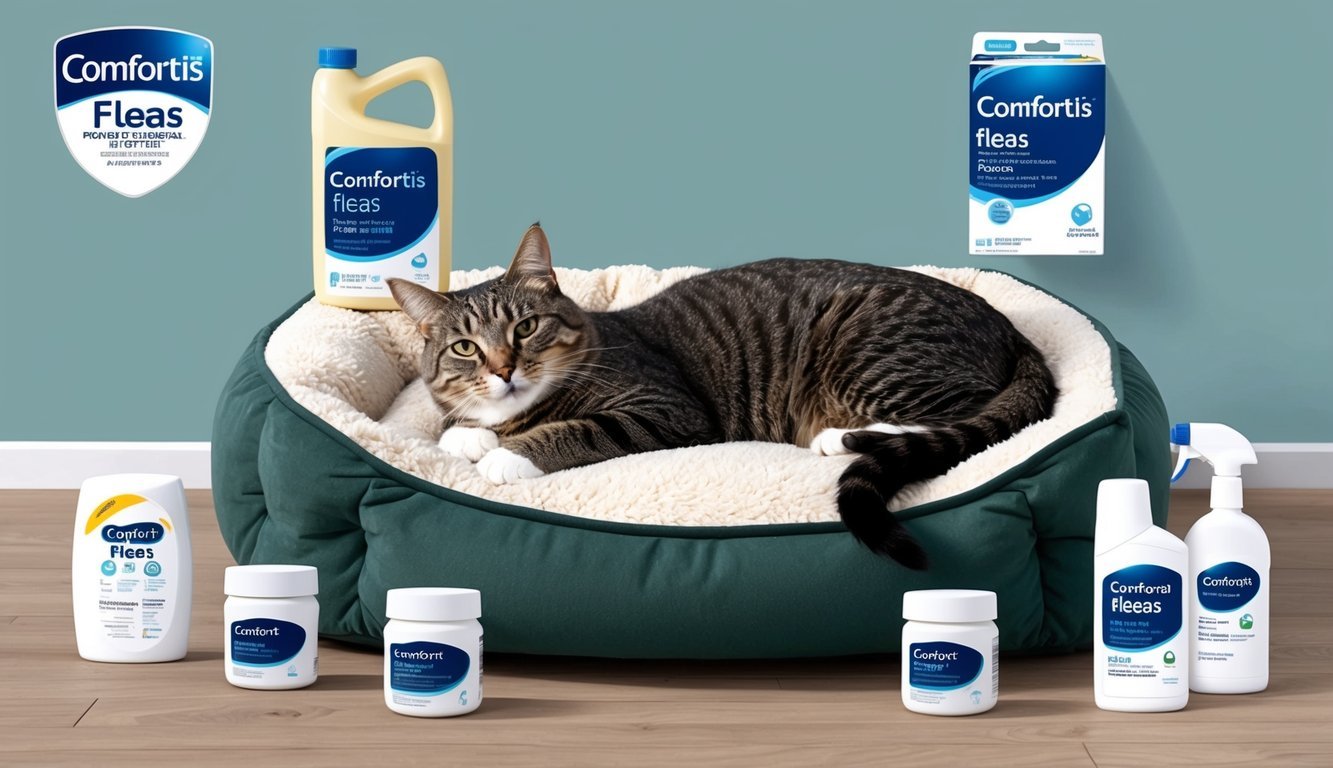
When selecting a flea treatment for your cat, comparing Comfortis with other options helps you make an informed choice.
Each treatment has its strengths and potential drawbacks that may influence your decision.
Comfortis vs. Topical Solutions
Comfortis is an oral flea treatment that starts working quickly, killing fleas within 30 minutes.
Unlike topical solutions, it doesn’t leave any greasy residue on your cat’s fur.
This can be an advantage if your pet dislikes being handled for application.
Topical treatments like Frontline and Revolution Plus are widely used, treating both fleas and ticks.
They may offer additional protection against heartworms and other parasites, which can be crucial depending on your area’s risks.
However, some cats may experience irritation from topical applications.
Ultimately, the choice between Comfortis and topical solutions depends on your cat’s preferences and any other protection needed.
Combination with Other Medications
If your cat has a flea infestation and requires heartworm preventatives, combining Comfortis with other medications can be a smart approach.
Comfortis targets adult fleas effectively, often providing relief as part of a broader treatment plan.
It’s safe to use Comfortis alongside heartworm preventatives like Heartgard.
However, always consult with your veterinarian before starting any combination treatment.
They’ll help you find the balance that suits your cat’s health needs while maximizing effectiveness against pests.
Additionally, there are some flea treatments that may have interactions with Comfortis, so ensuring compatibility is essential to maintain your cat’s well-being.
Manufacturer Information
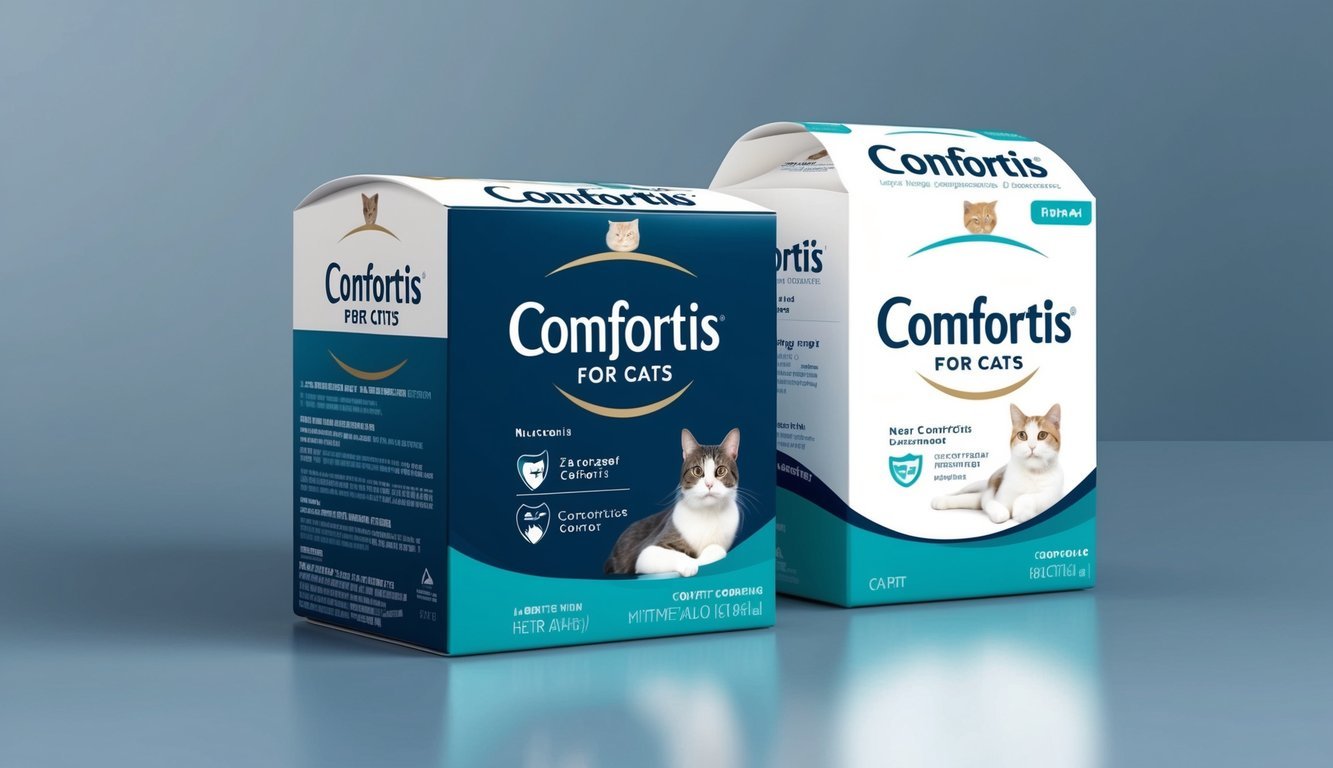
Understanding the manufacturer behind Comfortis can help you make informed decisions about its use for your cat.
Key aspects include the company’s background and the regulatory approvals that ensure the product’s safety and effectiveness.
Elanco Animal Health
Elanco Animal Health is a global leader in animal health solutions.
Founded in 1954, Elanco has focused on developing innovative products for the care of pets and livestock.
Comfortis contains Spinosad, an active ingredient derived from natural sources.
Elanco emphasizes safety and efficacy in their products.
They provide comprehensive information about comfort and performance.
Elanco also takes precautions regarding drug interactions.
If your cat is receiving another treatment, such as Ivermectin, consult your veterinarian.
Regulatory Approval
Comfortis is FDA approved, which means it has undergone rigorous testing to ensure safety and effectiveness in treating flea infestations.
The approval process involves thorough evaluations of both the active ingredient and the final product.
Comfortis is indicated for use in cats and kittens aged 14 weeks and older, weighing 4.1 pounds or more.
You can find the dosage information and usage guidelines on the packaging or the manufacturer’s website.
It’s vital to follow the dosages according to your cat’s weight for optimal results.
Always consult your veterinarian if you have any concerns regarding its use alongside other medications.
Environmental Considerations
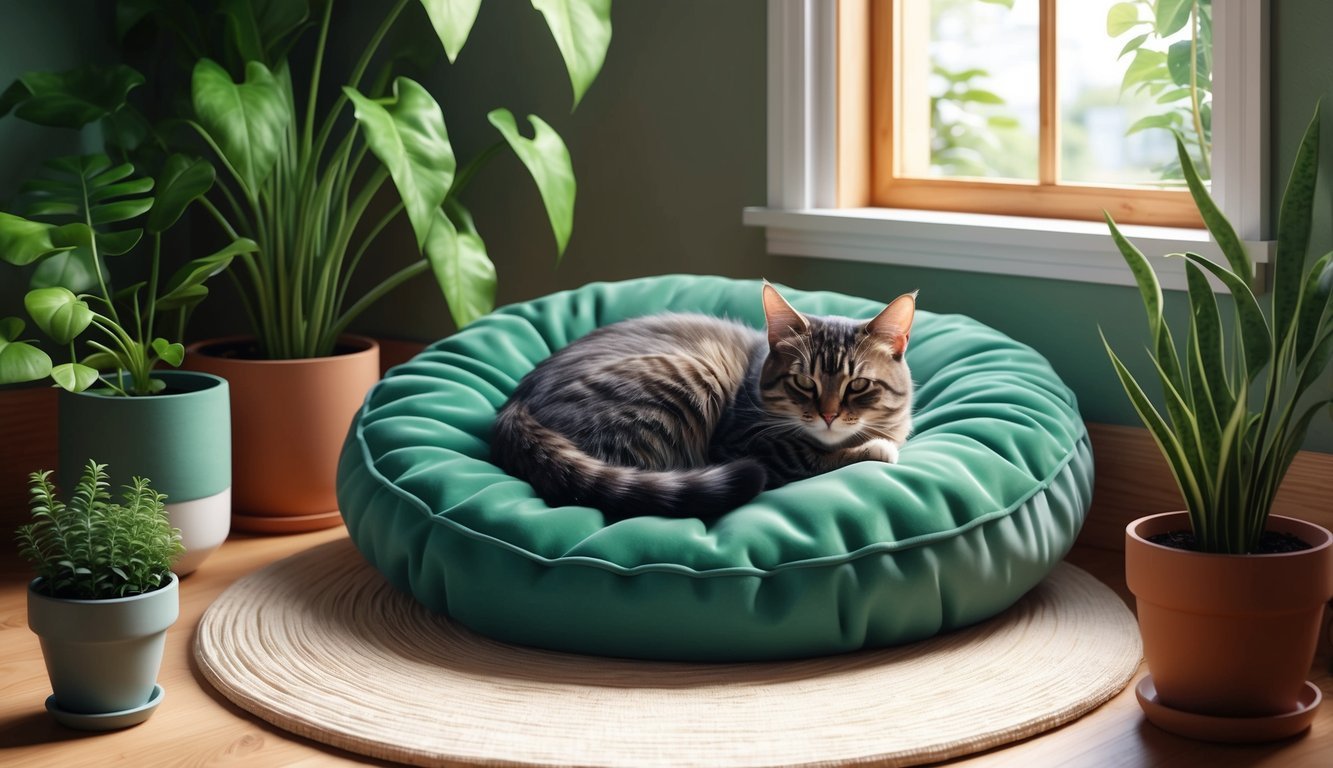
When using Comfortis for cats, you must consider its impact on your home environment and how to properly dispose of any unused tablets.
Understanding these factors can help ensure you are making responsible choices for your pet and the environment.
Impact on Home Environment
Comfortis, a flea treatment, contains spinosad, which acts as an insecticide.
While effective, it’s essential to recognize its potential effects on your living space.
After administering the treatment, you do not need to isolate your pet from other animals or children.
This convenience means fewer disruptions at home.
However, be mindful of the product’s chemical nature.
Ensure that your cat only consumes the dosage meant for them.
After treatment, avoid letting outdoor cats roam immediately to minimize exposure to non-target species.
Spinosad is known to be toxic to certain insects and aquatic invertebrates.
Disposal of Unused Tablets
Proper disposal of unused Comfortis tablets is crucial to protect the environment.
Do not throw them directly in the trash or flush them down the toilet, as this can contaminate water systems.
Instead, follow these steps:
- Take-Back Programs: Check with local veterinarians or pharmacies for drug take-back programs.
- Disguising: If disposal is necessary, mix unused tablets with an undesirable substance (like cat litter) and place them in a sealed container.
- Household Waste: Throw the container in your household waste.
Following these disposal methods ensures that the tablets do not pose a threat to wildlife or water systems.
Being mindful of how you handle and dispose of these products contributes to a healthier environment.
Community Insights
Many cat owners share their experiences with Comfortis, highlighting its effectiveness and ease of use.
Below, you’ll find testimonials from fellow cat owners and insights from veterinary professionals that reflect a range of perspectives on this flea treatment.
Testimonials from Cat Owners
Cat owners often praise Comfortis for its simplicity and quick results.
One pet parent reported, “My cat was infested with fleas, and Comfortis worked within hours.
I couldn’t believe how fast it acted.” Many appreciate the chewable form, stating that their cats readily accept the beef-flavored tablets.
While most feedback is positive, some cat owners have noted adverse reactions.
Instances of mild vomiting have been mentioned, but these were rare and not widespread.
One owner shared, “My cat had a little upset stomach, but it cleared up quickly.
Overall, I would recommend it.”
Convenience is another common theme, as you don’t have to isolate your pet after administration.
The lack of mess compared to topical treatments gives many owners peace of mind.
Expert Opinions
Veterinarians generally regard Comfortis positively for its efficacy against fleas.
According to veterinary reviews, it can eliminate a significant number of fleas rapidly—up to 98% on cats within just a few hours.
Most professionals highlight spinosad, the active ingredient, as effective yet safe when used correctly.
However, experts also caution you about potential side effects.
They stress the importance of following the dosage guidelines based on your cat’s weight to minimize risks.
A veterinarian advised, “Always consult your vet first, especially if your cat has a history of adverse reactions.”
Veterinary recommendations often reinforce the importance of regular flea control practices.
Many emphasize that Comfortis is a solid choice, particularly for cat owners looking to avoid the mess of topical treatments.
Frequently Asked Questions
If you have questions about Comfortis for your cat, you’re not alone.
Many pet owners want to know about its effectiveness, safety, and options for use.
What are the common side effects associated with Comfortis in cats?
Some cats may experience side effects like vomiting, diarrhea, or lethargy after taking Comfortis.
Although most side effects are mild, it’s important to monitor your cat for any unusual reactions and consult your veterinarian if you have concerns.
Can I purchase Comfortis for my cat without a prescription from a veterinarian?
Comfortis is a prescription medication.
You need to consult your veterinarian to obtain it legally for your cat.
This ensures that it is safe and appropriate for your pet’s specific health needs.
Has Comfortis been discontinued for use in cats, if so, what alternatives are available?
Comfortis has not been discontinued for cats.
If you’re looking for alternatives, consider other flea treatments like Frontline or Advantage, but always consult your vet before switching to ensure the safety and effectiveness for your cat.
How effective is Comfortis for controlling fleas in cats?
Comfortis is known for its effectiveness in killing fleas quickly.
It begins working within 30 minutes and offers protection for a full month, making it a reliable choice for flea control.
Are there any reviews from cat owners on the effectiveness of Comfortis?
Many cat owners report positive experiences with Comfortis.
Users often note that it dramatically reduces flea infestations and is easy to administer since it comes in a chewable form.
What’s the difference between Comfortis and Comfortis Plus for cats?
Comfortis primarily controls fleas, while Comfortis Plus also targets additional parasites like tapeworms.
If you are dealing with multiple types of infestations, Comfortis Plus may be the better option.
Always consult your vet to decide which product is right for your cat.



